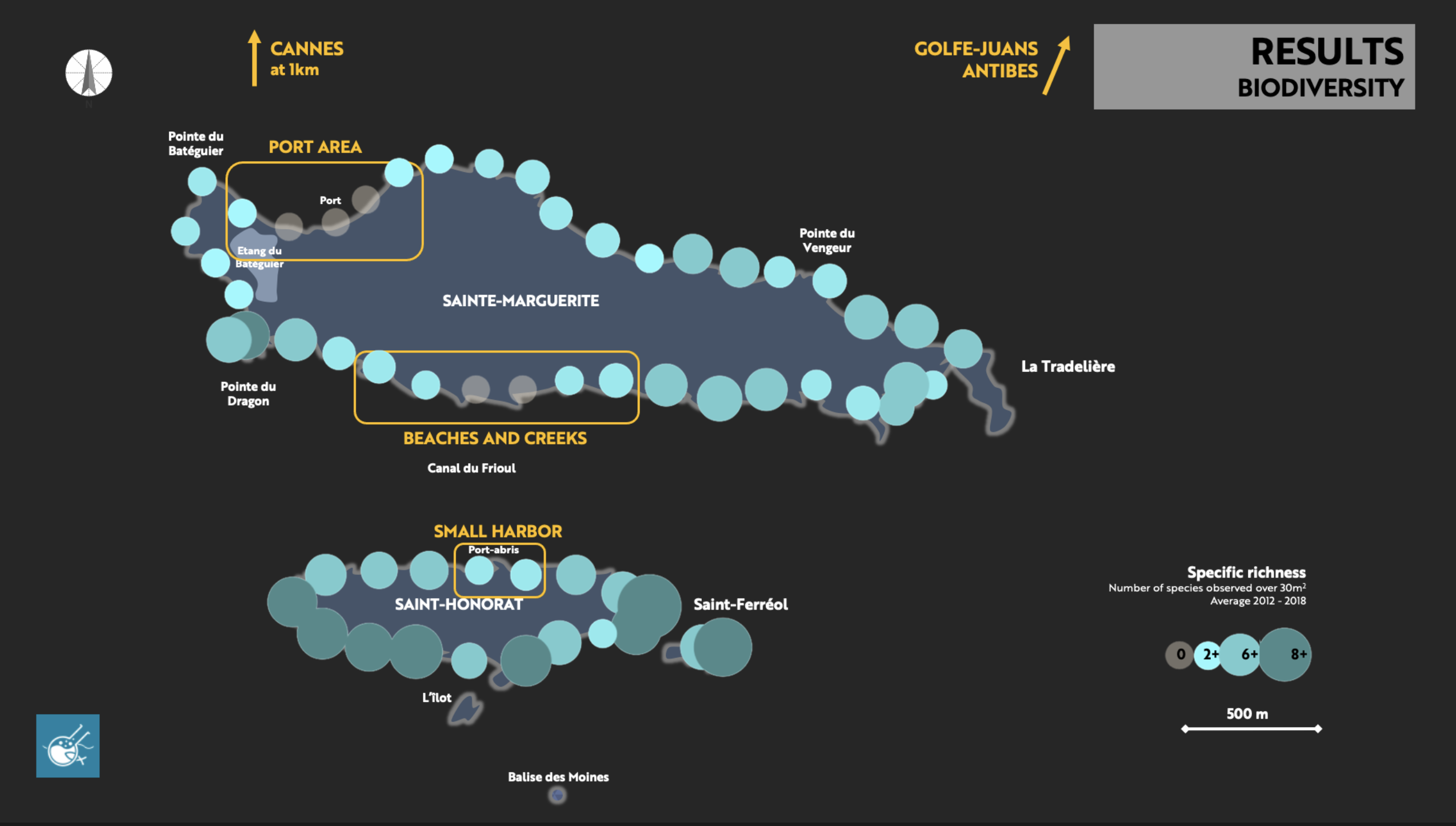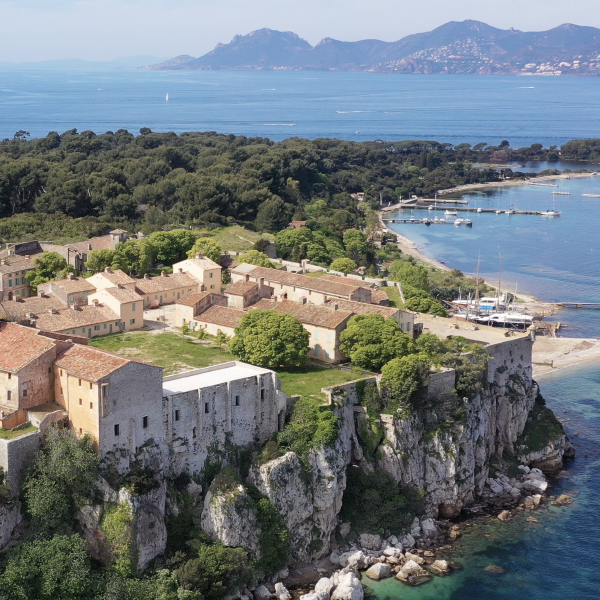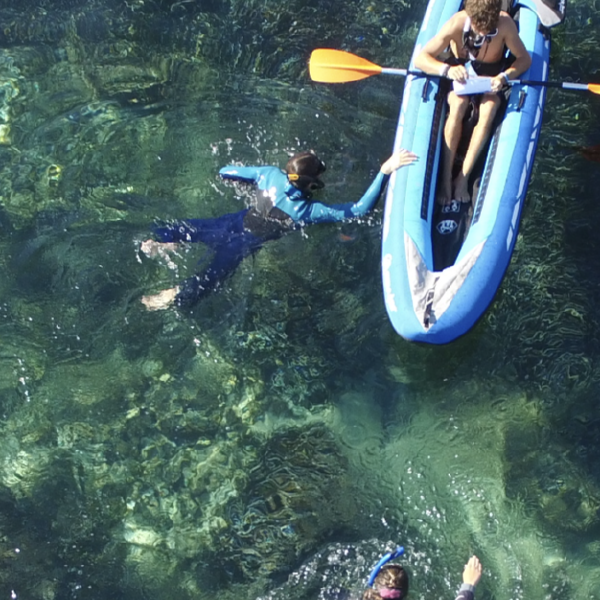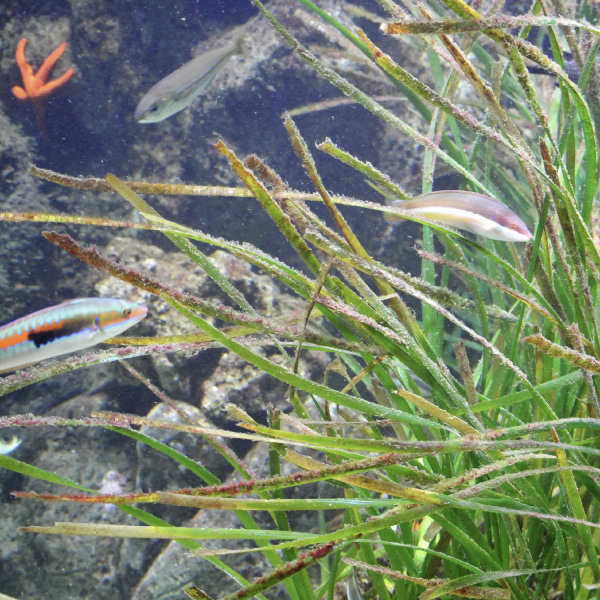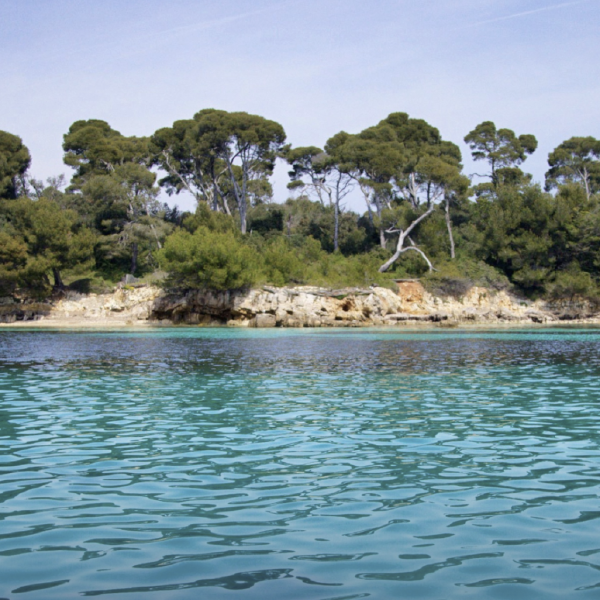MSc Ocean Science, Conservation & Innovation
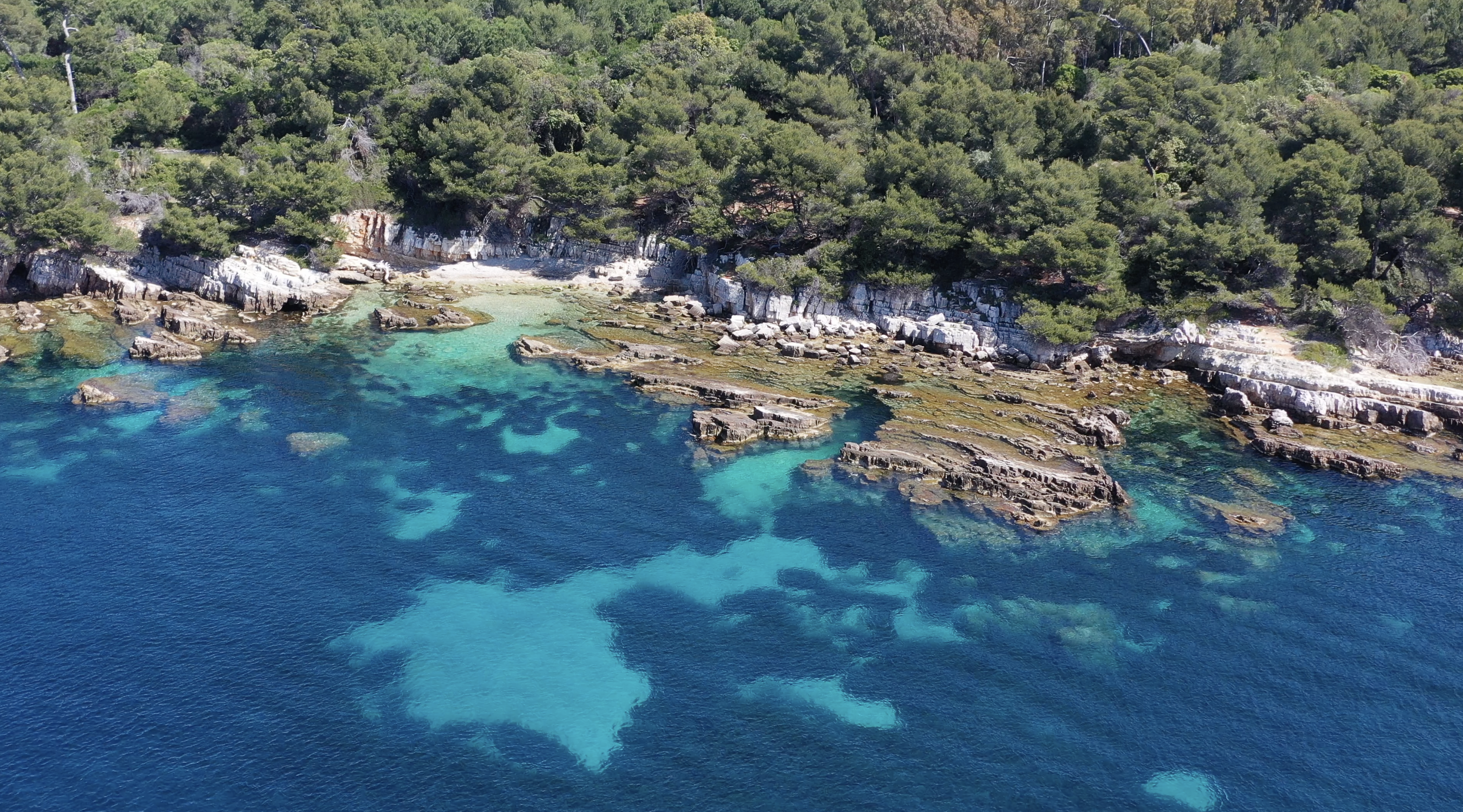
Biodiversity
The biodiversity observed during Leg 1, i.e. in the immediate vicinity of the coast and between 1 and 3 m depth, shows a greater specific richness (number of species present) around Saint Honorat than on Sainte Marguerite. On Sainte Marguerite, the sites are richer in the eastern part of the island and at the level of Pointe du Dragon. On the other hand, the harbour area and the area of the main beaches in the south are not very rich in species that can be easily seen while snorkelling.
In the archipelago, rocky areas seem to be richer than areas with soft substrate (gravel and sand), and specific richness correlates with algal cover (more species where algae are abundant). Posidonia meadows have a rather variable apparent biodiversity.
Care should be taken when interpreting these data. We are focusing on only a part of the species present on the Lerins, and environmental and anthropogenic factors may combine. For example, it would be difficult to say that Sainte Marguerite is less rich than Saint Honorat only because of anthropogenic influences (closer to the mainland and more visited), since Saint Honorat is more rocky (richer substrate than sand). However, if we compare only the rocky substrates, those of Saint Honorat are much richer than those of Sainte Marguerite.
